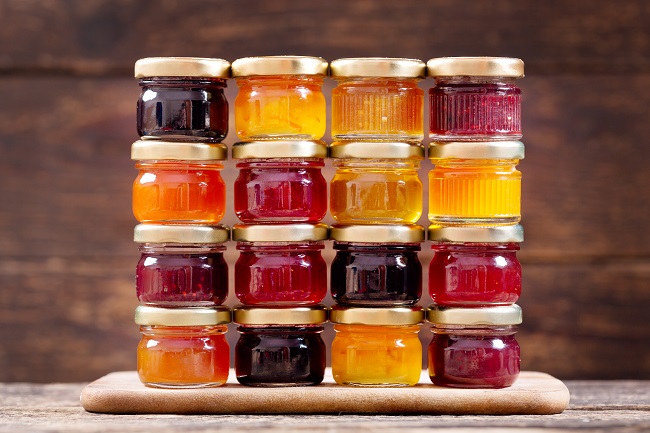Using the Science of Flavor Profiles
The flood of delicious and original jams, jellies, preserves, fruit butters, and marmalade on the market might give a person dreaming of an artisan preserve company pause. But there is always room in the market for unique and original flavor combinations. New classics are waiting to be discovered. But how to experiment without breaking the bank? Using the science of flavor profiles to develop exciting preserves and jams.

Many enthusiasts begin working up new recipes by trial and error in the home kitchen. But when the time comes to approach the business as a business, consider renting time in a commercial kitchen, and bring a scientific approach to matching flavors. High initial capital costs and debt load can sink a new business, especially a small batch, artisan food enterprise. Using a lean approach, plan to begin with four or five favors, learn how to market and sell them, make sure you like the business part of the business before investing more time and money. With the lean approach, the initial four or five recipes need to bring a mix of the familiar with the unusual, marry diverse flavor profiles, and hopefully bring something new to the market.
Fruit-based preserves- sweet, first. What else? Consider the flavors that came from other traditional methods of preserving, before electricity. Humans still have a great fondness for the flavor profiles of salted and fermented foods. Traditional flavors in fruit preserves of various kinds include sweet, tart, a bit bitter in marmalade. Fruit butters can be rich and warm with spices. Chutneys can have an acidic bite, some heat, unusual textures. Herbs can add unique flavor profiles. Part of human taste is smell, so consider the elements of aromatics.
Chart out your flavor profiles this way: make a list of potential fruit. The second list is going to be the unusual–flavors of fermented and salt-preserved foods, such as dark beer, Champagne, and Kalamata olives. The third list is spices and herbs.
If you make these lists on a large white board, you can then draw colored lines to connect disparate flavors from the three lists. You have the possible flavors of sweet, salty, bitter, acidic, umami.
Some fruits are going to call out for certain spices and herbs. But is this because we are familiar with them? Force yourself to not make the usual connections, such as apples and cinnamon, and explore the flavors as if you knew nothing about what is already on the shelves.
Consider a base of citrus fruit marmalade. Take Meyer lemon, blood orange, ruby red grapefruit. If you were making single-fruit marmalades with each of these fruits, which type of beer would you match with each? Something light with the lemons and something rich and dark with the blood orange? Take the beer off the table. What about aromatic herbs? Thyme, rosemary, sage? Which fruit would you match with flowers, such as rose petals? Which flavor would stand up to something salty, like Greek olives, to make a spread for a tapas bar or an antipasto tray?
There is a world of interesting and wonderful flavors still to be discovered, or rediscovered. Fruit preserves are one way to explore an artisanal small batch food business without a huge initial capital expenditure. Moving into a crowded marketplace will mean taking risks and making connections with flavor profiles that most people did not know they could not live without.
For more information about how we can help you start your food business, please contact us
